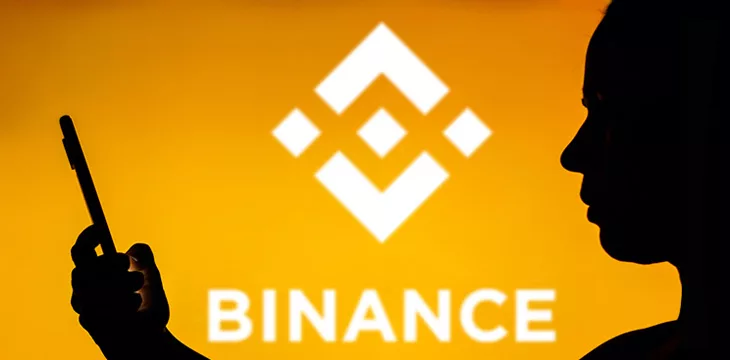| Getting your Trinity Audio player ready... |
Binance is downplaying reports that the controversial digital asset exchange facilitated transactions by Islamic terror groups again.
On May 5, Reuters reported that Israel’s National Bureau for Counter Terror Financing (NBCTF) had seized “around 190” Binance accounts, including two allegedly linked to the Islamic State (ISIS) terror group. “Dozens” or other seized accounts allegedly belonged to Palestinian firms connected to Hamas, which the U.S. State Department has designated a Foreign Terrorist Organization.
NBCTF documents reveal that two Binance accounts were seized in January to “thwart the activity” of ISIS and “impair its ability to further its goals.” The document doesn’t specify the type or quantity of digital assets in the two accounts, which were opened by a 28-year-old Palestinian named Osama Abuobayda.
The other seized accounts were owned by three Palestinian currency exchange firms—Al Mutahadun For Exchange, Dubai Company for Exchange, and Al Wefaq Co. For Exchange—all of which Israel has designated as terrorist organizations for allegedly enabling Hamas-linked fund transfers.
The Reuters report came one week after Izz el-Deen al-Qassam Brigades, the ‘armed wing’ of Hamas, declared that it would no longer accept donations in BTC due to what it claimed was “hostile” activity against donors who were identified via blockchain records. Hamas said it was taking this step “out of concern over the safety of donors and to spare them any harm.”
Hamas has long used ‘crypto’ to fund its activities, with Binance cited in 2019 Israeli media reports as one of the more popular conduits for such activity. In 2022, Israeli authorities seized assets from 12 digital accounts and 30 crypto wallets it claimed were linked to Hamas.
In March, the U.S. Commodity Futures Trading Commission (CFTC) filed civil charges against Binance for, among countless other transgressions, failing to close accounts linked to “HAMAS transactions” despite senior execs confirming awareness of the sketchy activity behind these accounts. These same execs did, however, find time to make jokes about the cost of AK-47 automatic rifles.
On Friday, Binance responded to the report, claiming Reuters had omitted “critical facts to fit their narrative.” Binance trotted out its now-standard evidence-free claims of loving compliance as much as Republicans love Hunter Biden porn and promoted the exchange’s allegedly “tireless” efforts to “keep bad actors entirely out of crypto.” (Physician, heal thyself.)
But Binance also claimed that its hands were tied because “bad actors don’t register accounts under the names of their criminal enterprises.” Behold, Binance’s invocation of that time-honored financial tradition of CKYC (can’t know your customer), which goes a long way toward explaining why Binance remains the Mos Eisley of digital asset exchanges.
Before moving on, we must comment on Binance’s claim that “it’s not possible for a crypto exchange (or anyone) to block or reverse a digital asset deposit once a transaction has been verified on the blockchain.” Actually, it is absolutely possible, provided you follow a few simple rules. But following rules was never Binance’s strong suit.
Skynet becomes self-aware?
Binance’s perpetual embrace of martyrdom somehow found another gear when its chief strategy officer Patrick Hillmann told Fortune that Binance was the victim of a ‘ChatGPT smear campaign.’ Hillman claimed that this ‘campaign’ appeared intended to convince U.S. federal politicians that Binance founder Changpeng ‘CZ’ Zhao was a Chinese Communist Party (CCP) official.
Fortune quoted Hillmann claiming that Binance had received “a flurry of inquiries from congressional offices” in recent weeks regarding CZ’s alleged CCP role. Hillmann claimed this included queries on whether CZ had developed a social media platform for the state-run China National Petroleum Corp. The alleged sources of this (dis)information were a bogus LinkedIn profile and a Forbes web page from 2018 that is no longer (or never was) active.
Binance has of late been frantically trying to downplay its links to China, including a Financial Times report that showed Binance continued to serve mainland customers long after the exchange claimed to have exited the Chinese market. CZ has gone as far as to suggest that attempts to link him to China are the product of racism.
The Fortune article was written by Jeff John Roberts, who was almost immediately challenged on Twitter by skeptics who asked if Binance had shared any of these alleged congressional communications with him. Roberts replied that “If it turns out to be false, I will find out and report it.” Roberts didn’t respond to follow-ups asking whether he’d made any effort to confirm Hillmann’s claims before publishing his article.
Kissing frogs
The crypto world is currently stanning hard on so-called ‘meme coins,’ aka tokens that serve no functional purpose other than being touted as the next to imminently ‘go to the moon.’ Much of the current hype surrounds PEPE, the ‘value’ of which (at the time of writing) has grown by over 1,400% (not a typo) in the past week.
While PEPE is still only worth around $0.000004, its overall market cap is over $1.7 billion, a pretty impressive achievement for a token that didn’t exist a month ago. Of course, realizing those gains will require you to find someone even stupider and willing to trade perfectly good fiat currency for your magic beans.
Fortunately, Binance is making it easier for you to hop onto this bandwagon. On Friday, Binance announced that it will list PEPE in the exchange’s ‘Innovation Zone’ (we’ve tried to locate Binance’s ‘Blatant Scam Zone’ to no avail).
Binance’s announcement included the caveat that PEPE “has no utility and it is created by an anonymous team…Also, there are signs that certain insiders or team members were able to buy 7% of the total token supply minutes after [Token Generation Event].” But, you know, knock yourself out, Binancians.
CZ recently participated in an Ask Me Anything event during which he was asked “how popular” a meme coin had to be before Binance chose to list it. CZ claimed that he “never really understood meme coins,” but “if a coin has a lot of users trading it, wanting it, playing with it, etc., then we’ll most likely list it.”
So, PEPE was created by parties unknown, who appear to be prepping to pull the financial rug out from under the saps who are trading the tokens on Binance. We seriously can’t wait until we learn months from now that the Izz el-Deen al-Qassam Brigades created PEPE as a means of replenishing its now BTC-deprived coffers. After which CZ will claim there was simply no way of knowing, so whatcha gonna do?
Follow CoinGeek’s Crypto Crime Cartel series, which delves into the stream of groups—from BitMEX to Binance, Bitcoin.com, Blockstream, ShapeShift, Coinbase, Ripple,
Ethereum, FTX and Tether—who have co-opted the digital asset revolution and turned the industry into a minefield for naïve (and even experienced) players in the market.
New to blockchain? Check out CoinGeek’s Blockchain for Beginners section, the ultimate resource guide to learn more about blockchain technology.







